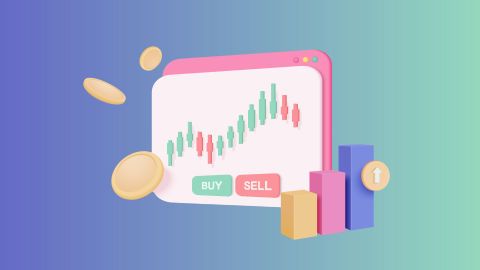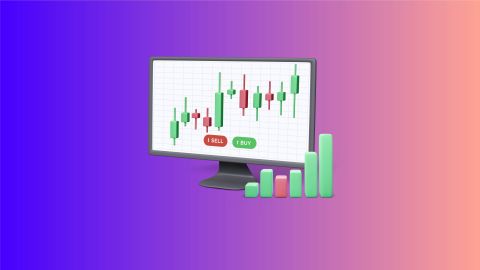How does average trade price work?
The Average Trade Price (ATP) provides valuable insights into the average cost an investor pays per share over a specific period. It is calculated by summing the total cost of all transactions executed in that timeframe and dividing it by the total number of trades conducted. By understanding ATP, investors can better evaluate the overall cost-effectiveness of their trades.
An alternative metric, Volume-Weighted Average Price (VWAP), incorporates transaction volumes into the calculation. This method gives a more nuanced understanding of market sentiment and can guide investors in identifying optimal buying or selling opportunities.
Both ATP and VWAP assist traders in gauging how the market is valuing a particular stock over time, helping them make more informed investment decisions.
Average Traded Price Formula
The Average Traded Price (ATP) refers to the weighted average price at which a stock or security is traded during a particular time frame, typically a day. It provides a more accurate reflection of trading activity than a simple average.
Formula:
Average Traded Price (ATP)=∑(Trade Price×Trade Volume)∑Trade Volume\text{Average Traded Price (ATP)} = \frac{\sum (\text{Trade Price} \times \text{Trade Volume})}{\sum \text{Trade Volume}}Average Traded Price (ATP)=∑Trade Volume∑(Trade Price×Trade Volume)
Explanation:
- Trade Price: The price at which a particular transaction occurred.
- Trade Volume: The quantity of shares traded at that price.
- The numerator multiplies each trade’s price by its corresponding volume (value of each trade).
- The denominator adds up all traded volumes.
This formula ensures that trades with higher volumes have a proportionately larger impact on the average, offering a more realistic picture of the market activity.
How to calculate average trade price?
The average trade price formula is used to calculate the Average Trade Price (ATP) by dividing the total traded value by the total quantity of shares traded. It is expressed as:
Average Trade Price = Sum of all trades during the specific period/Total number of trades during the same period
Importance of ATP:
- ATP provides a clearer picture of trading activity than traditional reference points like opening or closing prices, especially for stocks exhibiting significant intra-day volatility.
- It is particularly useful in scenarios where stock prices fluctuate sharply due to market events, enabling analysts and investors to pinpoint average transaction costs during such periods.
- As a more dynamic metric, ATP often proves more insightful for technical analysis compared to standard chart indicators.
Importance of Average Traded Price
Understanding the Average Traded Price (ATP) helps investors make well-informed decisions. If a company's ATP remains consistently low over the long term, it may signal weak investor interest or underperformance, making it a less attractive investment option. Here's why ATP matters to investors:
- Assessment: ATP enables investors to evaluate whether the current market price is trending above or below historical trading levels. It serves as a useful benchmark for analysing stock performance.
- Decision-making: Comparing the current price with the ATP allows for smarter investment decisions, especially when identifying undervalued or overvalued securities.
- Market analysis: ATP also reflects prevailing market sentiment. An upward movement suggests bullish behaviour, while a downward trend typically signals bearish sentiment.
Where to Check the Average Traded Price?
Today, several platforms offer easy access to Average Traded Price (ATP) data. These include:
- Online trading platforms: Most brokerage portals provide real-time ATP data for a wide range of stocks, aiding swift decision-making.
- Financial news websites: Platforms such as Dhan MadeForTrade feature active communities that share ATP insights, stock metrics, and market updates regularly.
- Mobile and desktop applications: Stock trading apps like Dhan offer convenient access to ATP data, helping investors track price trends on the go.
The role of FIFO in determining average traded price
FIFO, short for ‘First In, First Out’, is a common method used to calculate average traded price, particularly in stock trading.
In FIFO, the earliest transactions take precedence. This means that when calculating the average traded price, we begin with the prices of the initial purchases. These prices persist until all corresponding units are sold. Once those units are depleted, we then factor in the prices of subsequent purchases to compute the average price, and the process continues in chronological order.
Using the average traded price formula, this method reflects the principle that the first items bought are also the first items sold. FIFO is often preferred in accounting and trend trading because it tends to provide a more accurate representation of costs and values over time.
Simply put, FIFO ensures that the prices of the earliest transactions have the most impact on the average price.
Examples of utilising FIFO for calculating average traded prices
To illustrate the First In, First Out (FIFO) method for calculating ATP, let us examine three scenarios:
1. Quantity of shares sold less than the quantity of shares bought on the first day
An investor’s share transactions over multiple days:
- Day 1: Bought 100 shares at Rs. 50 each.
- Day 2: Bought 50 shares at Rs. 55 each.
- Day 3: Bought 150 shares at Rs. 60 each.
- Day 4: Sold 20 shares.
Using the FIFO method:
If 20 shares are sold on Day 4, according to FIFO, they would be from the initial batch of 100 shares bought on Day 1. Thus, on Day 10, 80 shares would remain from the first batch, while the total remaining shares would be 180.
Calculation:
- Average traded price on Day 4 for your XYZ holdings:
[(Rs. 50 * 100) + (Rs. 55 * 50) + (Rs. 60 * 150)] / (100 + 50 + 50) = Rs. 55.83
- Average traded price on Day 10 for your XYZ holdings:
[(Rs. 50 * 80) + (Rs. 55 * 50) + (Rs. 60 * 150)] / (80 + 50 + 150) = Rs. 56.25
Note that the reduction of 20 shares occurred from the shares priced at Rs. 50, which were bought first, as per the FIFO method.
2. Sell quantity larger than the quantity bought first
An investor’s share transactions over multiple days:
- Day 1: Bought 200 shares at Rs. 50 each.
- Day 2: Bought 100 shares at Rs. 55 each.
- Day 3: Bought 150 shares at Rs. 60 each.
- Day 4: Sold 500 shares.
Using the FIFO method:
- Sell all 200 shares bought on Day 1 at Rs. 50 each.
- Sell all 100 shares bought on Day 2 at Rs. 55 each.
- Sell the remaining 200 shares from Day 3 at Rs. 60 each.
Calculation:
- Total cost of Day 1 shares: 200 shares * Rs. 50 = Rs. 10000
- Total cost of Day 2 shares: 100 shares * Rs. 55 = Rs. 5500
- Total cost of Day 3 shares: 200 shares * Rs. 60 = Rs. 12000
- Total cost for all sold shares: Rs. 10000 + Rs. 5500 + Rs. 12000 = Rs. 27500
- Average price per share: Rs. 27500 / 500 shares = Rs. 55
Therefore, here, the average price per share for the shares sold using FIFO method would be Rs. 55.
Key Highlights
- Definition: The Average Traded Price (ATP) is the mean price at which a single share of stock is traded over a specific period.
- Reflects market activity: It represents the average amount paid for one share on a particular day or during a chosen timeframe.
- Investor insight: ATP helps investors understand how much others have paid for a stock historically, offering valuable market insight.
- Investment planning: By comparing ATP with the current market price, investors can gauge potential profitability from buying or selling a stock.
- Informed decisions: It supports better planning for future trades by indicating whether a stock is trading at a favourable price.
3. Quantity sold equal to the quantity bought in the first two days
An investor’s share transactions over multiple days:
- Day 1: Bought 200 shares at Rs. 50 each.
- Day 2: Bought another 200 shares at Rs. 55 each.
- Day 3: Bought 150 shares at Rs. 60 each.
- Day 4: Sold 400 shares.
Using the FIFO method:
- Sold all 200 shares bought on Day 1 at Rs. 50 each.
- Sold all 200 shares bought on Day 2 at Rs. 55 each.
- No shares from Day 3 were sold.
Calculation:
- Total cost of Day 1 shares: 200 shares * Rs. 50 = Rs. 10000
- Total cost of Day 2 shares: 200 shares * Rs. 55 = Rs. 11000
- Total cost for all sold shares: Rs. 10000 + Rs. 11000 = Rs. 21000
- Average price per share: Rs. 21000 / 400 shares = Rs. 52.50
Therefore, here, the average price per share for the shares sold using FIFO method would be Rs. 52.50.
Conclusion
It is essential to consider what is average traded price by grasping the average cost per share over time, investors can gauge potential returns and make informed decisions regarding buying or selling. Opting for safe and reputable trading platforms can provide various trading opportunities with competitive charges, ensuring a more secure investment experience.
Related Articles:





